Updated 02/05/2025
Online business advertising, also known as Internet advertising, is one of the most important aspects of marketing businesses online.
It has in fact one of the most used marketing models that led many small businesses to become multinational businesses.
However, many companies often forget or do not consider at all the enormous added value that the Internet offers precisely because of Internet advertising.
Advertising on the web is experiencing a golden age and growth rates are becoming increasingly attractive.
Building a website, or a corporate social page, that fails to reach its intended users is virtually useless.
But how to make online business advertising more interesting for users?
The goal is to try to offer them value-added content, even if of a commercial nature, in order to establish a relationship, a dialogue with them.
This involves engaging them, making them themselves ‘ambassadors’ of that brand or product.
But let’s find out more about that! 🎯
Table of Contents
ToggleHow Does Online Business Advertising Work?
It is a set of advertising actions on the Internet, organized according to marketing and business objectives aimed at its customers and potential customers.
Online Advertising Campaigns are therefore a form of promotion that uses the Internet to send advertising messages aimed at attracting customers.
Before the advent of the Internet, advertising had a “Vertical” type structure, “From top to bottom”.
In a nutshell, companies promoted their products and services and the potential customer was passively subjected to the advertising message without being able to respond.
Not only could the company not be answered, but the advertising was based on “Interruption Marketing”, that is, on the principle of interrupting the normal enjoyment of a television or radio program, with the administration of a video, audio, or paper advertising message.
Needless to say, this method is outdated, and how little television or radio can influence our purchases.
The internet has changed everything, now thanks to social networks we can directly talk to large companies with criticism or compliments.
Our purchases are increasingly influenced by the opinions of other users, influencers, bloggers, or forums.
In particular Google, with Google Ads and its search engine, and Facebook, with its sponsored posts, AdsTargets display advertising have completely changed the rules of advertising.
In fact, web marketing does not follow the principle of interruption, hitting different targets indiscriminately, but rather aims to find your product “in the right place and at the right time”.
What Are Its Benefits?
In this section you can highlight in detail the 3 main benefits of online business advertising:
1. Reach the right people
To sell you have to have people willing to buy and, today, these people are mostly present on the web.
With online business advertising, you can and must address a specific target audience, i.e. those people who may be interested in your offer.
You have to ask yourself “What problem does my product or service solve or what desire does it satisfy?
Starting from this you have to identify your potential customers: what characteristics they have, what they need, what goals they want to achieve, etc.
Starting from this information you can build the right message for the right people who will read it at the right time.
Well, this is the goal to aim for and it’s the way to attract users’ attention to your brand.
To simplify the concept as much as possible, online business advertising is like giving your company’s flyer to people who might need you.
What’s more, you have a potentially endless user base, so your chances of getting more new customers are multiplied.

2. Get measurable results
Digital tools are used to advertise on the internet or social media.
This means that they give you the ability to track, manage and analyze data and information about your potential customers.
As you know, data is the new treasure of the business, because it gives you insight into how your campaigns are going. This way you have the ability to know where improvement is needed.
But it doesn’t end there. The data and information you get are also used to identify which consumers have made the last purchase and which have pulled out at the last one.
You can make a list of those who have reconsidered and do other online business advertising campaigns targeted and strictly dedicated to that audience.
Do you know why this interests you?
Because you know in advance that those people had shown an interest and therefore the conversion rate of those users is much higher.

You may also like: Free online advertising Platforms
3. Control over your investments
If you invest a budget in online business advertising you will know exactly what the return on investment is for each of your euros. This is always thanks to the digital tools that allow you to keep track of the general trend.
This is a huge advantage because you don’t have to wait until the end of the campaign to know if things went well or not. But you’ll have the chance to fix it as you go along, both positively and negatively.
In fact, with the help of an industry expert who knows how to read the data, you’ll know when it’s best to pause the campaign online and fix things.
Or, on the contrary, when it’s time to invest a little more to get an even greater return.
None of these benefits should be underestimated because it’s awareness of how things are going that gives you the chance to make the best choices.
Do you remember all the times you said “If I had known before…”, that’s what online business advertising allows you to do?

What Are Its Main Types Of Campaigns And Their Cost Models?
1. SEA – Search Engine Advertising
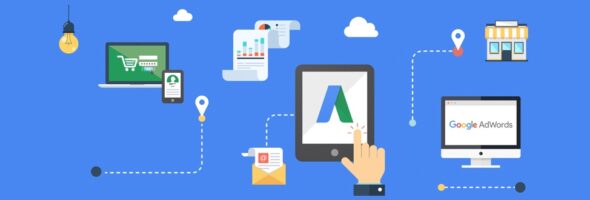
Since these are advertisements on search engines, they are part of the wider range of SEM (Search Engine Marketing) techniques.
The undisputed champion in this field is Google Ads (formerly Adwords) which allows you to advertise on Google, but not on other search engines.
If you need to publish advertising banners on Yahoo or Bing you must use Bing Ads. Search engines in Russia or China use other systems still.
Adwords ads can be text, graphics, and video.
In google, the search network can be published only text ads and only when users type the keywords that you have decided to use as a target when planning your campaign.
The most commonly used payment model for Adwords ads on the search network is pay-per-click or CPC (Cost Per Click).
With this system, the advertiser establishes a maximum bid with which to participate in the auction for the purchase of advertising on google, and the payment is paid only after the user’s clicks.
The quality of the advertisement, which Google calculates through Ad Rank and Quality Score, affects the cost of clicks and related percentages (CTR).
If an ad is published and does not receive any clicks, the cost is zero, with the advantage that you still get a free impression.
Google Ads also allows you to publish ads (in various formats) on google partner sites and portals: those that have become part of its AdSense affiliate network.
The choice of contexts in which to display ads is up to the web marketer advertiser who takes advantage of geographical, demographic, and behavioral variables made available by the system to show ads to potentially more receptive users.
Also for these reasons a web marketing strategy cannot do without online business advertising with Google Ads.
In addition to Google Ads campaigns (Adwords) and their equivalents on other engines, it is possible to advertise directly on search engines through the so-called Search Retargeting.
A type of retargeting that consists of proposing targeted ads to users who have shown interest in certain thematic or product categories on other sites on the network.
By grouping users according to their browsing habits, search retargeting is a very powerful form of behavioral web marketing that guarantees good performance and a high click-through rate (CTR).
2. Display campaigns on third-party websites, blogs, and portals
The choice to publish ads on these spaces responds primarily to the idea of capturing audiences in contexts deemed consistent with their target audience and bringing them to their site.
A company that sells telephone accessories, for example, has every interest in online business advertising on portals that sell mobile phones.
In the past, the ways in which this advertising technique was exploited were rather artisanal and involved direct contact between the advertiser and those who sold the space.
Today, this is done mainly through intermediary companies and digital platforms that manage the meeting between supply and demand, as well as the form in which the advertisements are published.
Without wanting to be exhaustive and very schematic, we include among the display advertising campaigns:
- Affiliate campaigns or affiliate marketing

We publish banner ads, video ads, and other types of advertisements (pop-ups, rich media, etc.)
In spaces sold by other sites and web channels called publishers or publishers.
The exchange takes place through an intermediary that manages the affiliate program and provides a technological platform that automates the entire process, manages payments, and allows monitoring of the campaign.
The typical cost model of affiliate marketing is performance-based so that the compensation to the intermediary is recognized only when the user performs an action on the advertiser’s site (purchase, submission of a form, viewing a video, etc.).
- Retargeting campaigns
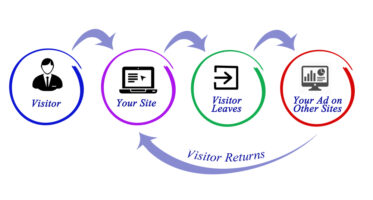
As in the previous case, the ads are published on the net wherever there is a publisher selling a space; the peculiarity of retargeting is that the advertisement is shown only to people who had previously visited the advertiser’s site showing a certain interest.
The objectives can be to recover conversions not finalized on the site, propose new purchase opportunities to a profiled target, and strengthen brand awareness.
Similar to affiliate marketing, there are intermediary companies specialized in this form of promotional activity that can also be planned through google Adwords (alternatively or in parallel with other campaigns).
- Remarketing campaigns
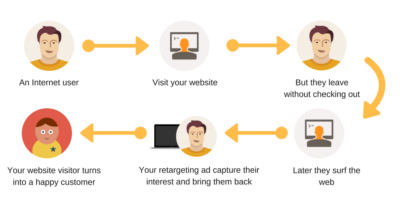
Unlike retargeting where ads “chase” people on the network who have visited the site without having produced actions of any value.
Remarketing ads are advertising aimed at an audience of customers or people already involved to some extent with the brand.
Therefore, remarketing campaigns aim to build customer loyalty and strengthen the relationship with the customer.
This advertising strategy is not only the prerogative of brokerage companies, agencies, and google Adwords consultants, but it can be carried out on its own through email marketing, directly targeting registered users in its email database (possibly collected inhomogeneous categories).
- RTB or Real Time Bidding
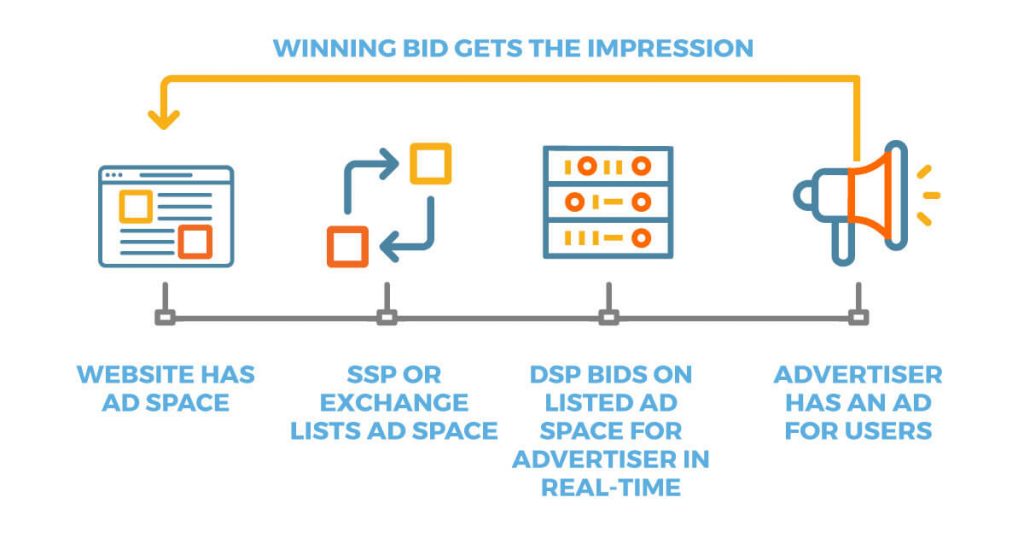
Web marketing model that allows you to buy advertising space by bidding in real-time in auctions attended by multiple advertisers.
Originally, auctions were made unsold, i.e. on advertising space that had not received bids. Today this model is also imposing itself on premium spaces.
Here, too, we use specialized intermediaries and platforms that publish on networks of sites affiliated with the program.
The advantage of this method is that it is possible to buy advertising space even in a niche and spend less than other forms of display marketing.
The payment model is CPM (Cost Per Thousand Impressions).
- Google Display

We talked about it above: it’s the purchase of online business advertising space on the sites of google’s proprietary affiliate network (AdSense). The platform to publish ads is always Google Adwords.
Since this is an articulated and complex area, the display campaigns described are added variants and other types such as search retargeting, which we mentioned earlier, which chases users directly on search engines and for this reason does not fall into the category of display advertising.
But should be considered a subcategory of SEA (Search Engine Advertising), in turn, a specialty of SEM (Search Engine Marketing).
3. Native Advertising

Native ads are advertisements that take on the format and tone of the website or web channel in which they are published.
The publication may or may not be automated, in any case, the ad (graphic or textual) integrates with the rest of the content while maintaining continuity in form and style.
Native advertising is particularly effective because it disguises itself as normal content within the channel in which it is shown, greatly reducing the user’s resistance.
In addition, the consistency of style and content that it maintains with the flow of the page in which it is inserted increases the relevance and, with it, the chances of being interesting for the visitor of that web channel.
Native ads appeal to various types of publishers, the main ones being:
- Marketplace: Amazon, eBay, Alibaba, Etsy, etc.
- Social Media: Facebook, Youtube, Instagram, LinkedIn, etc.
- Blogs and Online Magazines
4. Social media advertising: advertising in social channels

If social media marketing is the strategic use of social channels and online communities for commercial purposes, social network advertising is the paid advertising shown within social networks.
It is a very interesting option and is increasingly exploited by companies because it allows leveraging the main features of each social network to capture the attention of the audience.
Involving them in actions within those channels, taking them to visit the website or the same physical stores with coupons issued through advertising campaigns.
The main advantage of online business advertising on social networks is to be able to take advantage of the geographical, demographic, and psychological information provided by users themselves, or deduced from their activity within the channels, to create display ads aimed at a highly profiled target.
The most important social channels where you can advertise online with good margins of success are:
- Youtube
For each of these popular social networks the ad management interface, which is internal to the channel, offers specific features that are continuously updated to provide advertisers with new options and greater potential for return on investment.
Ad formats vary depending on the channel and can be text, graphics, video, or particular variants of these.
Typical cost models are Pay Per Click (CPC) and Cost Per Thousand (CPM).
All social channels provide more or less sophisticated monitoring data to measure campaign performance.
It is recommended to compare them, when necessary, with those obtained from website monitoring to obtain interpretations useful for campaign optimization and ROI quantification.
Remember that the companies specializing in retargeting campaigns that we mentioned earlier sometimes offer the possibility of retargeting on social networks as well as other circuits of websites.
This is possible thanks to multilateral agreements between social networks and these online business advertising intermediaries.
In this way, social networks become part of the retargeting circuits offering an additional opportunity to track web users with advertising banners.
In general, social media advertising is a rapidly developing branch of online business advertising that promises to absorb increasing shares of internet advertising budgets allocated by companies (not just b2c) of all sizes.
5. Programming Advertising

Programmatic advertising is a type of automatic advertising managed by programs specialized in buying and selling advertising space on sites, internet platforms, and digital applications (not only mobile).
The ads can be text, video, or graphic banners, and are published in real-time as a result of the interaction between advertisers and publishers through the use of automated computer platforms.
In this respect, programmatic advertising is a form of online business advertising similar to RTB (Real-Time Bidding).
The difference, which is the great strength of programmatic advertising, is that the latter makes use of data “appended” to users, thanks to cookies and pixels, to serve ads in a more appropriate and effective way.
When we surf the Internet, with the browser of our computer or smartphone, when we use Facebook or other social networks when we use WhatsApp to communicate with friends when we download a mobile app, and so on,
our actions are recorded and associated (cookies and pixels) to the software and applications we use on the Web, as labels that “declare” to other specialized software what our user profile is (where we live, who and which places we frequent, habits, tastes, spending capacity, etc.).
Demographic and behavioural data about us become information used to serve us targeted advertisements:
- the right ad: in terms of content and proposal;
- in the right digital channel: in terms of consistency and relevance with the proposed content;
- at the right time: with the right timing;
- in the right virtual or physical place: the advertisement can be published on a thematic web portal or, for example, it can appear on a digital panel inside a physical store.
The technical operation of this real-time buying and selling system is relatively complex and involves certain types of technological platforms:
- DMP (Data Management Platform): it collects and organizes big data related to users’ behavior, segmenting them by categories and transforming them into useful information for advertisers to identify the type of audience they are interested in;
- DSP (Demand Side Platform): participate in the auction process in real-time by entering information about advertisers and their purchase needs (budget, bidding settings, user profiles in target, etc.);
- SSP (Sell Side Platform): they create the inventory of advertising space auctioned by publishers in different media;
- AD Exchange is the platform that connects DSPs, i.e. advertisers, with SSPs, i.e. publishers, allowing the matching of supply and demand in the online marketplace.
In short, programmatic advertising makes it possible to buy advertising space in a programmatic way, moving from planning by impressions to planning per person, with a level of target definition higher than the classic RTB.
A banner can then be published in web channels, mobile applications, or digital platforms editorially consistent with the planned campaign, for a specific target, at a specific time, in a specific geographical location, or on a specific device.
For this reason, programmatic advertising can currently be considered the most advanced form of real-time advertising.
6. Advertisements on price comparison sites

This advertising option is reserved for e-commerce stores that sell online.
Affiliating with price comparison sites, your product catalog is inserted in the portal’s database and becomes accessible through internal site searches but also among search engine results, gaining visibility on the internet.
Price comparators do not sell directly, rather, depending on the searches made, they show a list of products of the same product type but of different sellers comparing prices and other features in order to make the work easier for users.
The advertisements published are accompanied by photos of the products, prices, and descriptions that the seller provides to the portal to promote its catalog.
Once clicked, the advertisements lead the user to the relevant page of the online store where the purchase can be made.
Advertising the online store with price comparators provides an important source of visitors to the eCommerce site and ensures greater visibility on the web.
Stores that are not afraid of comparison with their competitors use this promotional technique to increase online sales and brand awareness.
The 5 Tips For A Successful Advertising Campaign
1. Having clear ideas
First of all, you have to be clear about the purpose of your advertising. Don’t lose heart! Take stock of the situation and try to understand what to include and what to exclude.
The initial picture must be clear: what do you want to do? How and why? What emotions do you want to arouse? What do you want to achieve? To make a good advertisement you need to know in depth the company’s mission, its values, its main characteristics, and the objectives it wants to achieve.
2. Identify the target
It is then essential to accurately identify your target audience, i.e. the segment of consumers that the company wants to target.
The logo, graphics, and colors used in the campaign must be appropriate and in line with the target group’s preferences, in order to persuade and receive positive feedback.
The language used must also be able to “reflect” the audience with whom you want to communicate.
For example, if we want to sponsor a game for children aged 7-9 years, we will have to use elementary, basic terminology; on the contrary, to advertise a car or a household appliance, we will use more technical vocabulary, able to be understood by a more adult audience.
3. Communicating in a clear and sincere way
Very important is the clarity of the presentation. Spreading a message that is linear and concise is essential to be considered positively.
What you want to convey must be communicated correctly, in a sincere way, and with effective language that can reach the public quickly and easily.
Do not try to adorn the company with features and an image that does not really represent it.
To be honest, it’s the only way the audience will gain your trust and become attached to the brand.
4. Choose communication channels
Another aspect not to be underestimated is the channels to use, each of which has its own characteristics and audience.
It is important to choose the channel according to the target audience we want to address.
If we want to communicate with an adult target, the best choice is to focus on the traditional offline channels, such as the press, including magazines and newspapers, television, billboards, and flyers, which are valid and very useful methods to stand out.
If, on the other hand, we are targeting a younger target, online platforms are certainly better suited. Websites, Social Networks, Blogs, and not only, have become, especially among young people, the most used means.
5. Finding original and innovative ideas
It is often believed that following the standard method of communication and the basic rules of advertising is better because it offers almost assured success.
What you need to do to stand out from the crowd is to launch yourself into new experiences, use innovative strategies and think of brilliant ideas that impress the viewer.
It is important to be recognized and remembered.
Always remember that times are changing and customers are becoming more and more demanding. What “worked” 3 years ago may not be as successful now.
Look around, find inspiration and be confident that your campaign will be a success!
In summary, the criteria to make a good advertisement are many and varied, just have a little ‘ingenuity and creativity and follow logically the steps you want to perform, in order to achieve your goals.
Conclusion
I think it is clear to you at this point that Internet advertising is an incredible tool to add to your digital marketing strategies.
The advantages and opportunities it offers are not comparable to traditional advertising.
Online you can connect and interact with your potential customers, recover those who seem lost, adapt your messages to your target audience, and analyze the trends of your campaigns.
Make your brand really strong, retain your existing customers and always find new ones thanks to your online business advertising strategies.
Doing all this is very challenging, but all you need is to know what your business needs and then find the right experts who can take care of it with you.
If you need help in this area, do not hesitate to contact us, we are at your complete disposal! 😊
AdsTargets Team 🎯

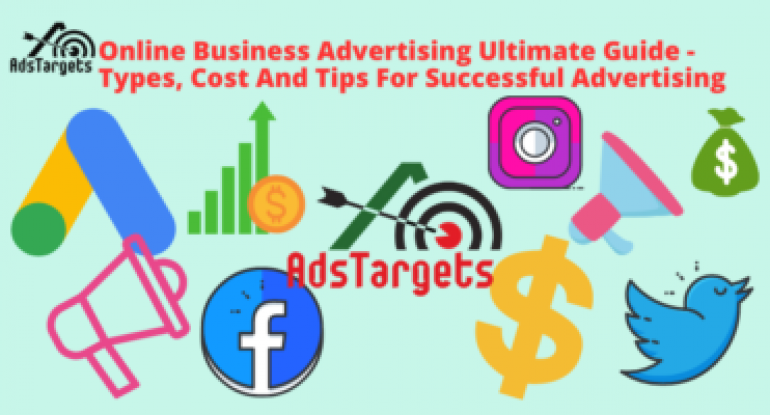







One Response
Tip – I’ve found you don’t want to advertise in price comparison sites unless you really selling the ‘cheapest’ product in a category as it brings CHEAP customers like crazy… For the right product/ loss leader strategy though it CAN be a decent outlet for customers overall